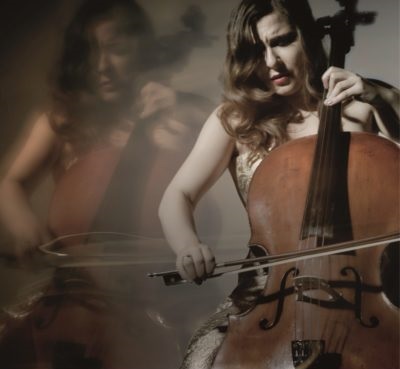 United States Dvořák, Mahler: Alisa Weilerstein (cello), Christiane Karg (soprano), Elisabeth Kulman (mezzo-soprano), Prague Philharmonic Choir / Lukáš Vasilek (principal conductor), Czech Philharmonic / Semyon Bychkov (conductor), Carnegie Hall, New York City. 27-28.10.2018. (BH)
United States Dvořák, Mahler: Alisa Weilerstein (cello), Christiane Karg (soprano), Elisabeth Kulman (mezzo-soprano), Prague Philharmonic Choir / Lukáš Vasilek (principal conductor), Czech Philharmonic / Semyon Bychkov (conductor), Carnegie Hall, New York City. 27-28.10.2018. (BH)

Dvořák — Cello Concerto in B Minor, Op.104; Symphony No.7 in D Minor, Op.70
Mahler — Symphony No.2 in C Minor, ‘Resurrection’
In its first New York appearance in four years, the Czech Philharmonic offered two richly detailed concerts that contributed — in their own modest way — to feelings of optimism and hope. The preceding week was long and sorrowful. Over a dozen bombs were mailed to prominent people around the United States, and then a synagogue in Pittsburgh suffered the horror of an armed killer.
All that was momentarily forgotten from the first notes of Dvořák’s Cello Concerto, given sumptuous life by Alisa Weilerstein, with conductor Semyon Bychkov, the orchestra’s recently appointed music director. Her passion and involvement were obvious, even inspiring some eyebrow-raising comments. ‘She’s erotic,’ observed one friend. (I am only reporting the news.)
Weilerstein, who has recorded the piece (on Decca), was in keen rapport with the ensemble — by turns delicate and muscular. She was notable in the middle Adagio, like a dancer among the corps. But she was also at home diving into sprightly spiccatos with abandon. Bychkov urged the orchestra to rise up gloriously when Weilerstein was not at the fore, but was equally able to calm the waters when needed, such as the cellist’s solos with principal flute Daniel Hava, or concertmaster Jiří Vodička.
After the interval, the composer’s Seventh Symphony showed the ensemble’s bright, lissome string tone. As in the concerto, Bychkov showed admirable patience, letting the melodies unfold, especially in the Poco adagio movement. The genteel Scherzo — a graceful, patrician waltz — had the balm of a flower-filled meadow. And the vivacious finale boasted true pianissimos, at the lower end of a dynamic range all the way up to tuttis that roared off the Carnegie stage like Niagara Falls.
As encores, two of the composer’s Slavonic Dances added to the pleasure, starting with the relatively demure Op.72, No.2 in E minor. But then the group let out all the stops with Op.46, No.1 in C major, one of the most brilliant showpieces in the repertory.
The orchestra has a long history with Mahler, and that came through in the next night’s loving reading of his Symphony No.2. Part of the occasion: 28 October was the 100th anniversary of Czech independence. And few works might be more ideal for depicting — as Bychkov wrote in the notes — ‘the human spirit when it refuses to surrender’. The snarling opening movement had thrilling details: rhapsodic winds, a perfect col legno from the violins, all climaxing in the triumphant unison descent at the end.
Before the second movement Bychkov paused — maybe not the 5 minutes Mahler suggested, but close — and soprano Christiane Karg and mezzo-soprano Elizabeth Kulman made their way onstage. During the gentleness that followed, many interior lines were audible: a faint trumpet, a usually-buried clarinet. Bychkov lent the found the same gentility that made the previous night’s Dvořák so effective.
But the conductor’s gift for contrasts came howling through in the demonic middle movement, even if not as crazed as in other accounts. No matter, his strength and deliberate approach brought plenty of surprises, all the way to the closing, dying embers. In the ‘Urlicht’, Elisabeth Kulman’s lustrous mezzo-soprano emerged as if from a crypt, gently rising, flowing without dragging, pure but not sentimental, and with disarming tone and diction.
And then came the finale, with the brass especially on fire, whether raucous in marches or hushed in richly-tuned chorales. Most times, when a chorus is needed for Mahler in New York, one of the many superb local ensembles is tapped. Flying in almost 100 members of the Prague Philharmonic Choir — honed by principal conductor Lukáš Vasilek — can’t have been an inexpensive proposition, but the result was a treat. As the radiance built, the chorus’s discipline melded with the sometimes muted, sometimes blazing colors of the orchestra, and soprano Christiane Karg added a piquant top note to the splendor. By the overwhelming conclusion, one wonders how anyone could resist Mahler’s inevitable tread toward spiritual ecstasy.
Bruce Hodges
Seen and Heard apologies for the late posting of these reviews.